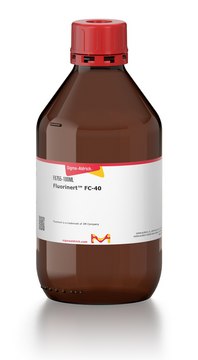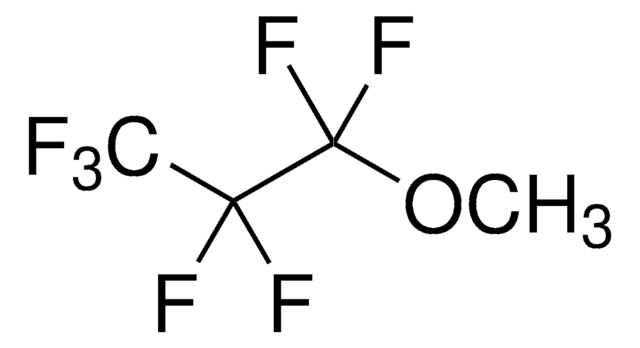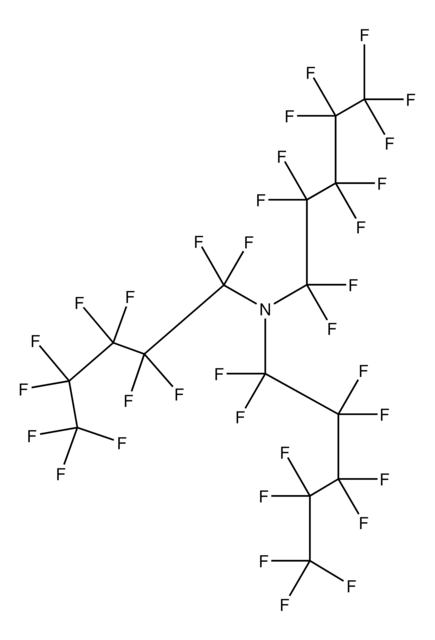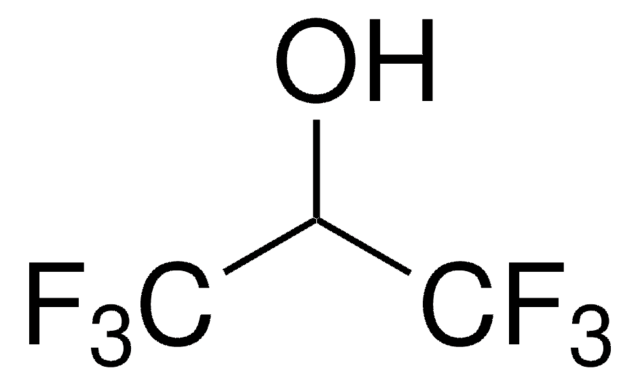592781
Ethoxynonafluorobutane
99.0%, mixture of two isomers
Sign Into View Organizational & Contract Pricing
All Photos(3)
About This Item
Empirical Formula (Hill Notation):
C6H5F9O
Molecular Weight:
264.09
MDL number:
UNSPSC Code:
12352100
PubChem Substance ID:
NACRES:
NA.22
Recommended Products
Assay
99.0%
autoignition temp.
707 °F
impurities
<100 ppm water
evapn. residue
<0.0003%
refractive index
n20/D 1.282 (lit.)
bp
76 °C (lit.)
mp
−138 °C (lit.)
density
1.428 g/mL at 25 °C (lit.)
UV absorption
λ: 220 nm Amax: 1.0
λ: 225 nm Amax: 0.35
λ: 250 nm Amax: 0.05
λ: 300-400 nm Amax: 0.01
functional group
ether
fluoro
SMILES string
CCOC(F)(F)C(F)(F)C(F)(F)C(F)(F)F
InChI
1S/C6H5F9O/c1-2-16-6(14,15)4(9,10)3(7,8)5(11,12)13/h2H2,1H3
InChI key
DFUYAWQUODQGFF-UHFFFAOYSA-N
General description
Ethoxynonafluorobutane can be called as an eco-friendly solvent, which finds applications in chromatography since it has high lipophilic character as a result of which, it can be used as a substitute for hexane.
Hazard Statements
Precautionary Statements
Hazard Classifications
Aquatic Chronic 4
Storage Class Code
10 - Combustible liquids
WGK
WGK 3
Flash Point(F)
Not applicable
Flash Point(C)
Not applicable
Choose from one of the most recent versions:
Already Own This Product?
Find documentation for the products that you have recently purchased in the Document Library.
?Retention of fluorinated chiral selectors in biphasic fluorinated solvent systems and its application to the separation of enantiomers by countercurrent chromatography?
Perez MA and Minguillon C
Journal of Chromatography A, 1217(07), 1094-1100 (2010)
Kang Hee Ku et al.
Advanced materials (Deerfield Beach, Fla.), 31(51), e1905569-e1905569 (2019-10-23)
Dynamically reconfigurable oil-in-water (o/w) Pickering emulsions are developed, wherein the assembly of particles (i.e., platinum-on-carbon and iron-on-carbon particles) can be actively controlled by adjusting interfacial tensions. A balanced adsorption of particles and surfactants at the o/w interface allows for the
Our team of scientists has experience in all areas of research including Life Science, Material Science, Chemical Synthesis, Chromatography, Analytical and many others.
Contact Technical Service






![Poly[4,5-difluoro-2,2-bis(trifluoromethyl)-1,3-dioxole-co-tetrafluoroethylene] dioxole 87 mol %](/deepweb/assets/sigmaaldrich/product/structures/951/320/21327fcd-4960-402d-8ae1-bf2e379cb2e2/640/21327fcd-4960-402d-8ae1-bf2e379cb2e2.png)

